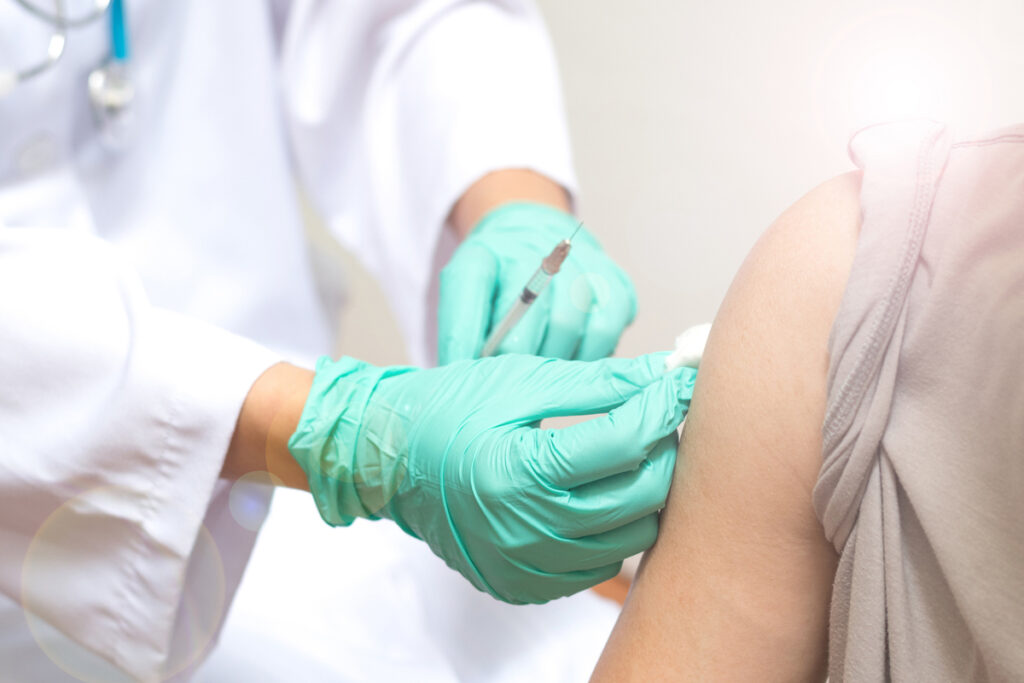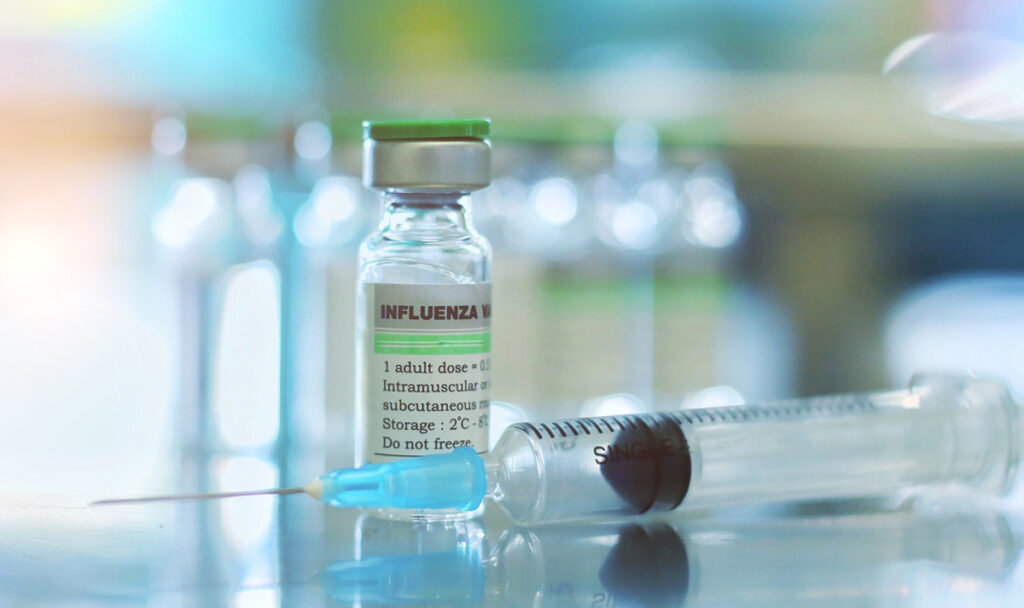For the 2020-2021 flu season 192.3 million doses have been distributed, the most in a single season, according to the CDC. Comparatively speaking, from October 2019 through April 2020, 39 million people had the flu, resulting in 740,000 flu hospitalizations.

Health system’s supply chain plays an important role in providing clinicians with the freedom to focus on care and not on supply chain activities. Here are four ways supply chain can provide them with a holistic flu program, encompassing prevention, diagnostics and treatment:
- Demand planning for pre-season and in-season vaccinations and treatment.
- Standardization of the flu-related portfolio in order to leverage better product costs and reimbursement.
- A point-of-care flu and respiratory testing program at all non-acute treatment sites.
- An automated supply chain, which can relieve clinicians (and supply chain) from the traditional burdens of procurement.
Step 1: Anticipate demand
Having a flu preparedness plan in place is good business and essential for a seamless transition into flu season. It begins by anticipating the demand for vaccines, flu tests, antivirals and necessary med/surg supplies to vaccinate.
By examining last season’s purchases and consumption data, supply chain can spot trends to help anticipate demand. Your supplier can assist in gathering that information and adjusting it, if necessary, to accommodate anticipated market – and epidemiological – developments.
Health systems should consider its patient mix to determine which vaccines to order. Having access to a full vaccine portfolio with vaccines for patients of every age, including FluMist® Quadrivalent, a nasal spray flu vaccine for eligible children and adults ages 2-49. Note: the industry has moved from trivalent vaccines, (containing three strains – two A” and one “B”) to quadrivalent vaccines (containing four strains – two “A” and two “B”).
Supply chain should also consider working with its lab supply chain counterparts to ensure there will be enough flu test kits, including rapid molecular testing. Rapid molecular assays can detect the influenza virus in approximately 15 – 30 minutes2 and supports latest infectious disease society flu (IDSA) guidelines (www.idsociety.org/practice-guideline/influenza). Due to expected allocations and supply restraints on COVID-19 tests for molecular tests, many health systems should understand the testing options for flu and COVID-19, then work with a distribution partner to help each care setting get set up to address respiratory illnesses with a full suite of testing for flu, strep, RSV and COVID-19.
Step 2: Standardize
Supply chain executives know that standardization leads to more efficient processes and lower costs. The same principle holds true for flu programs.
By selecting one distributor, the health system gains access to the depth and breadth of flu products, including vaccines, ancillary medical supplies, diagnostic testing, and products for treating flu. (The last category includes Tamiflu®, which is used to treat flu in people two weeks of age and older who have had flu symptoms for no more than two days.)
The health system benefits from the distributor’s volume contracts with manufacturers, and web-based reporting helps supply chain understand who is ordering vaccines, what type of vaccines and ancillary products they are ordering, and from whom they are ordering them. This may be your best shot at identifying “rogue purchasing,” which can adversely affect the health system’s ability to standardize for best costs.
Step 3: A systemwide program
Chances are, your health system is facing increased competition for flu vaccinations from supermarkets and retail clinics. That’s why many are building point-of-care flu and respiratory testing programs for all their non-acute treatment sites.
Competitive reasons aside, such programs benefit patients. By providing systemwide, holistic care for flu and respiratory illness, the health system can capture and record vaccination and treatment activities in the electronic healthcare record. That’s helpful if the patient is hospitalized or seen by someone other than their family physician. What’s more, if vaccines or tests are recalled, the health system can track down potentially impacted patients using patient records.
Point-of-care flu and RSV tests can be administered in the doctor’s office and delivered to the patient in minutes. This same-day process speeds up treatment plans and can help support patient satisfaction. After all, when you’re sick, the last thing you want to do is go to multiple offices for testing. Health systems should consider standardization and adoption of multiple methods for testing.
Step 4: Automate your supply chain
Automation of back-end processes leads to better business efficiencies. Managing pre-season and in-season flu ordering can be an automated process. Rather than shuffling through myriads of reports from multiple distributors and manufacturers, supply chain has quick and easy access to systemwide data and analytics to help with demand planning. Using cutting-edge technology can help capture and analyze data across the health system. In non-acute care settings, which are often located across a region, having connectivity like EDI and on-line ordering can help enable business efficiencies.
FluWise®
McKesson has offered the FluWise® program to customers for several years, but recently adapted it for today’s health systems. The program offers expanded warehouse hours, so all sites receive their vaccine and other flu-related products quickly. Ninety-five percent of orders come with same- or next-day delivery. FluWise® also offers guidance on opportunities to standardize products, complimentary training on topics such as vaccine storage and influenza coding, and expertise to help the health system manage patients’ needs throughout the flu season.
By participating in the FluWise® program, supply chain gains access to a committed customer service team, who will answer product-related questions, expedite orders, and provide alternatives in case of backorders. They can help supply chain pre-book flu vaccines to make sure the health system gets high-quality products in the quantities needed, and avoid manufacturer waitlists.
Given the potential complexities COVID-19 may bring to the upcoming flu season, consider helping your clinicians serve their patients with McKesson FluWise®. For more information, visit https://mms.mckesson.com/content/clinical-resources/flu-management.
1 https://www.cdc.gov/flu/about/burden/preliminary-in-season-estimates.htm
2 https://www.cdc.gov/flu/professionals/diagnosis/molecular-assays.htm

2021-2022 flu season update
Supply chain executives can expect a higher demand for influenza vaccine from their clinicians than they have in prior flu seasons, says Omar Bateh, director of vaccines, McKesson Medical-Surgical.
Very early manufacturing estimates for the 2021-22 flu season are 184-188 million doses, compared to approximately 168 million doses in the 2019-2020 season, he says. “Across various class-of-trades, we are seeing a 10 to 20% increase in demand.” There are expectations of high demand for the 2021-2022 flu season.
The McKesson Medical-Surgical vaccine team is working closely with every manufacturer on pre-booking demand to help increase supply in the marketplace for the upcoming season, he adds.
In addition to a greater demand for flu vaccine, healthcare providers can expect a few other changes related to the COVID-19 lockdown last season.
“Providers should be thinking about alternative avenues to administer flu vaccines, potentially vaccinating in the parking lot, setting up drive-through clinics, or potentially partnering with a home health agency to vaccinate patients in their homes,” says Bateh.
In addition, as clinicians administer flu shots in the fall, they should make sure to catch their patients up on any shots they might have missed during the lockdown. “Even if the patient is up-to-date, they should be offered a pneumonia shot such as Pneumovax® 23 or Prevnar 13®, and a shingles vaccine like Shingrix.”
Depending on the severity of the upcoming season, supply chain might encounter a heightened demand for antiviral medications, such as the branded drug Tamiflu®, the generic oseltamivir phosphate, as well as Xofluxa™, first marketed in October 2018.
